

“I assess the power of a will by how much resistance, pain, and torture it endures and knows how to turn to its advantage.”
—Friedrich Nietzsche
For some people, probably most people, there is a longing to explore various levels of consciousness. There are many means to achieve different states, whether it being through meditation, drugs, dreaming (especially lucid dreaming), and some can even discover them through listening to music and dancing, which is often seen at raves. This is not a new quest; it’s something that people have been doing for millions of years, all over the globe.
Those in the body modification community, especially people who are active in suspensions or pulls are examples of those who actively seek out different levels of consciousness. For many, these activities allow them to easily achieve altered states. Such rituals allow people to learn about the relationship between the mind and the body.
IAM:Inza, a 23 year old film student, has been on a quest for altered states of consciousness since she was a young girl. In her mid-teens she started experimenting with cutting because she wanted to know more about pain and body sensations. She got her first piercing at age fifteen, and she currently has over fifty body piercings, and both of her arms, her back and her head tattooed. She also has an implant in her chest, her tongue is split, and scarification on various places on her body. She’s done several types of suspensions, including coma, chest, and suicide. Never wanting to be stagnant in her life, she says that she needs to be progressing in everything that she does, and this includes her body. Body modification allows her to change, play and be creative with her physical self — something that’s very important to her and she hopes to never give up. Inza combines different types of pain and modifications to enhance her experiences, something rarely seen in this community. After she was comfortable with normal suspension, she added facial play piercings and then body play piercings to her suspensions — something she wasn’t sure she could handle at first, but it ended up being a wonderful experience for her.
She says that the idea to conform and find comfort in being at a standstill, something that’s so inherent to human nature repels her. I talked to Inza about her lifelong quest for the unordinary, and the steps she’s taken to get to know her body and its limits.
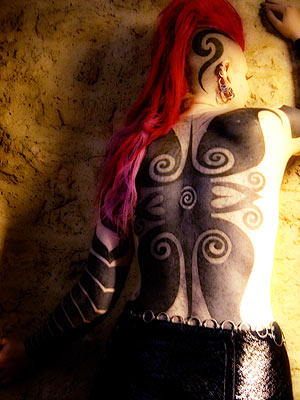 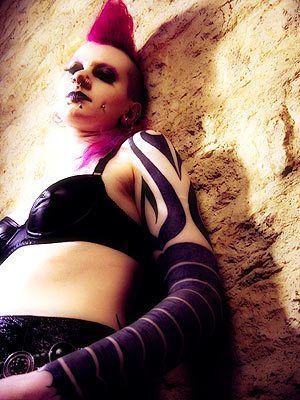
Inza, portraits by Raphaelle Duplay
|
|
BME: |
Have you always felt different from other people?
|
| INZA: |
Even as a child I asked myself, “Who am I?” I have always wanted to find my genuine self, and as a child, I knew that my family, school and society were intending to create me as a personality and it had nothing to do with who I really was and wanted to be. I felt like a stranger who didn’t belong to this reality, and I felt the same pressure with the way that I looked: people pushed their desire for me to look natural, but it never felt right — it didn’t correspond to my true personality and the way I saw myself. Instead I wanted to create a look according to my inner self and my notions of beauty. These were off-beat and freaky looks that I found amazingly beautiful since a very early age, and this fascination was so strong that it’s possibly innate. I’ve always played around with clothes and heavy makeup and different hair styles — something that I still do today!
|
|
BME: |
You do have a very unique look; where does it come from?
|
| INZA: |
Thank you, but I don’t consider my look to be unique. I haven’t invented anything, and all the elements of my look are not original — it’s the way I combine them that can create the impression of originality. The sources of my aesthetic inspiration vary from 80’s punk, post-punk and new wave to different indigenous cultures.
My passion for eccentricity goes back to early childhood. Even as a small child, I was greatly unsatisfied with the ordinary reality, and though at that age I couldn’t fully realize how vile the world is, I already found it senseless and dull. At the same time, I was very much attracted to visual eccentricity. I clearly remember that when I saw unconventional looking people, I thought they were fantastic creatures who lived in a totally different, wonderful and exciting reality. I immediately knew that this was what I wanted to be. Obviously, I’m not nearly as romantic about it now as I was at the age of five, but I’ve carried that fascination throughout my life.
|
|
BME: |
Along with your physical need to be different, you’ve also been interested in achieving altered states of consciousness since you were much younger. Now that you’re an adult, you can take part in suspensions and other body rituals, but how did you achieve that goal before you found these methods?
|
| INZA: |
I was interested in meditation and self-hypnosis, but what I often tried were psychedelics, like LSD. I don’t do any at the present time, but would like to try them again. It’s not that body modification replaced the need for them — for me they are a totally different experience, and one can’t substitute for the other. I have an enormous respect for psychedelic substances — they had a deep effect on my life and my personality, and I’m grateful to them for opening my eyes on so many things.
|
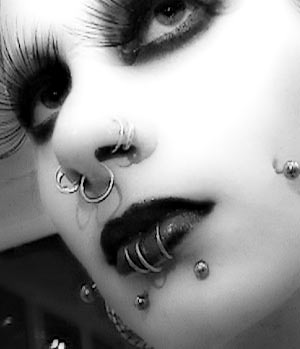
|
|
BME: |
How did your fascination with body modification start?
|
| INZA: |
Like a lot of people I was highly influenced by the Modern Primitives book, which I discovered at the age of sixteen. There was really something extraordinary about the effect it had on me and I remember before reading the actual book, I read an article about it in a counter culture magazine. Even reading this article and seeing few pictures shook me to the core and I started searching for the book. When I eventually found it, it had a tremendous impact on me.
|
|
BME: |
What kind of impact, and do you remember any of the pictures that influenced you the most?
|
| INZA: |
The ones that had the most effect were the images of Fakir Musafar.
I already had quite a lot of piercings and I was a cutter, but I was really confused because cutting was always viewed as something negative and associated with masochism and depression, and I knew I had a totally different reason for doing it. Reading the book confirmed my belief that what I was doing was not something negative and self-destructive, but a wish to explore the effect that pain and body sensations have on the mind.
Also, at the time I was in search of an alternative spirituality. I don’t want to say I’m a spiritual person, but I always felt the need to have it in my life. Modern Primitives made me understand that body modification and body rituals can be a spiritual thing, and I can use my own body for spiritual growth, and that’s what I’m trying to do.
Suffice to say that for several years I was totally into this book. But as I grew older and as I re-read the book over and over again, I started to disagree with a lot of things written in it and my general opinion on it changed, but I still feel grateful for the huge impact it had on my life. It really expanded my horizons.
|
|
BME: |
What were some of the things that you disagreed with?
|
| INZA: |
Though it’s been a while since I’ve read it, one of the major things I disagreed with was the idealized and romanticized vision of tribal cultures that the book gives. When I first read it, I got a view on tribal cultures, but it was only when I learned more about them through reading and watching documentaries that I realized that the social structures that existed in most of them were highly oppressive and incompatible with my strong individualist beliefs.
I’m still very much into indigenous cultures, but I separate aesthetics and spirituality from social order and the way of life that existed in them.
I feel that some people who were interviewed in the book were being conservative and almost close-minded because of their fixation on tribal cultures, criticizing certain types of modifications that were not practiced in them.
And finally, I don’t like the idea of putting all people who do body modifications under one tag — “Modern Primitives” or any other, as a lot of them wouldn’t identify themselves as such.
|
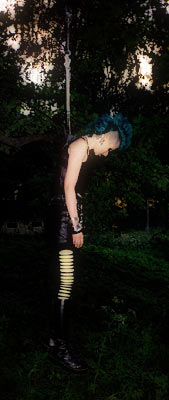 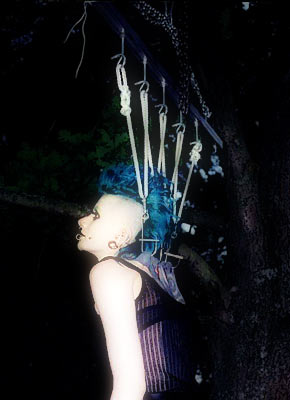
Inza’s first suspension.
|
|
|
BME: |
When was your first suspension?
|
| INZA: |
It was about two years ago, in 2003. I wanted to do it several years before, but I didn’t have an opportunity as suspensions were not practiced in the area I lived in. I did a suicide suspension and it was one of the most beautiful, ecstatic and ground-breaking events in my life! I remember thinking that it was not as painful as I had expected it to be. Piercing and inserting the hooks was more painful than the suspension itself.
When I was up in the air, I was totally amazed and astonished by what I felt: there was hardly any pain (or rather, I found it easy to ignore), and I had an out-of-body sensation and the feeling of floating. I always pay lots of attention to the environment where I do my body rituals, and for my first suspension, I chose the seashore and I could feel a positive energy around me. At some point during the suspension, I started to think of different problems and hardships I had in that period of my life, but these thoughts were replaced by the certitude of me being able to live through them. I was surprised by how staggering and deep the experience was: I hadn’t expected that doing a suspension could get me into such an altered state of mind. I felt very strong and full of hope. My first suspension was pure joy!
|
|
BME: |
Because you were able to overcome your negative thoughts, and in a way, heal because of your suspension, would you consider it “therapy”?
|
| INZA: |
No, not at all. For me the word “therapy” implies the presence of some kind of sickness or mental problem, but the problems I thought of during that suspension were not from the inside, and had nothing to do with my mental state, but with the highly oppressive environment I lived in at the time. I was wondering if I could survive the enormous pressure from the outside world, staying true to myself and keep devotion to the things I love and believe in. The answer I had then was “yes.” The experience wasn’t therapy, but rather something that filled me with strength and reinforced my will, along with giving me one of those rare moments of ecstasy and bliss that are so precious.
|
|
BME: |
You’ve now done several types of suspensions — have you been able to reach an altered state with each experience? Do you find any differences with each type of suspension?
|
| INZA: |
When I do suspensions, it’s rather a question of getting into an altered state or failing to do so. I view suspensions as a tool for this, but the experience I have once I’ve achieved them doesn’t really depend on the type of suspension. The only time I failed to achieve it was with a chest suspension: I was able to deal with the pain, but it was extremely difficult to breathe. Plus there were a lot of people around, including a TV crew, and it made me feel very uncomfortable.
By far, I found it easiest to transcend the pain in a suicide suspension. It was a bit harder during my coma suspension, but I enjoyed it a lot. What I really love about suicide suspension is the movement is less restricted and you can swing. I like to swing a lot and it strengthens the sensation of floating.
I still haven’t done all types of suspension: I still have a knee and superman to try, and I hope to be able to do them soon.

|
|
BME: |
What other types of body rituals or body modifications have you done?
|
| INZA: |
I have always been interested in play piercings and my first experience with it was mouth sewing, but facial ones have always attracted me the most. I’m totally fascinated by how my face is changed because of it and when I see my play pierced face, it has a very strong impact on me. Large gauge needles alter the traits and expression of my face which produces a peculiar, almost creature-like, non-human look only facial play piercing can give. I think every person’s perception of self is strongly connected with the visual image of oneself, so for me, seeing my face transformed by play piercing is really mind-blowing.
|
|
BME: |
Lip sewing is not often the first choice when someone wants to experiment, so how did you get into it?
|
| INZA: |
It happened quite spontaneously. I wanted to try play piercing, and since I’m very bad at piercing, I had been looking for a piercer who would be interested in doing it for me. I knew someone who was organizing an exhibition, and he said that a piercer who was a friend of his wanted to do a performance and that I should speak with him about doing something together. So I talked to him, he proposed that we do a mouth sewing that day! I hadn’t expected to be asked to do it so soon, but because I wanted to try play piercing really badly, and I couldn’t find any other piercers who would be willing to do it, I agreed. It was the first and the last time I did a of body ritual as a public performance. We didn’t use thread — instead we used large gauge needles going through both of my lips.
I don’t have particularly good feelings about that experience, but it remains important because it was the first time I did a play piercing, and because of it, I immediately knew it was something I wanted to continue to explore.
|
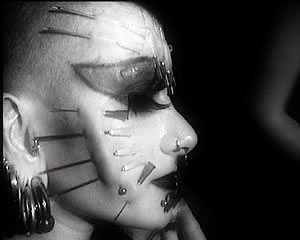 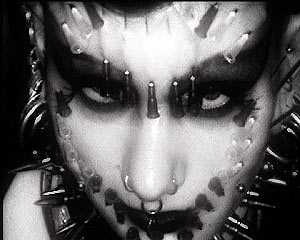 |
| Large gauge facial play piercings.
|
|
|
BME: |
How often do you practice facial play piercings?
|
| INZA: |
I don’t do facial play piercings on a regular basis, as it depends on whether I feel like I’m in the right mood and state of mind to do them. It’s physically exhausting and because I use large gauge needles I bleed quite a lot, and it takes about two weeks for the swelling to go down and bruises to heal, and about a month for marks to disappear, if they do at all. So far, I’ve done facial play piercings six times, and five of those times have been done with large gauge needles.
|
|
BME: |
What gauge do you usually do use?
|
|
INZA: |
Lots of people ask me but I really don’t know! I just take the biggest I see. I never care about gauges, I don’t even know the size of my ear plugs.
|
|
BME: |
How do you choose the people who do your play piercings for you? Has anything ever gone wrong?
|
| INZA: |
People who have done it for me have been both professional piercers and close friends. I prefer to do it with my friends, but as facial play piercing isn’t the safest thing to do, it’s important that I choose people who have a lot of experience and knowledge about piercing. Once during a facial play piercing session, a needle struck a vein in my forehead, and after taking out the needle, we couldn’t stop the bleeding. We had to call an ambulance and get a paramedic’s help in order to get it to stop. Since then, I’ve been extremely careful about the way facial play piercing is done.
|
|
BME: |
Next you combined facial play piercings with suspensions. What made you decided to do that?
|
| INZA: |
I’m the kind of person that pushes oneself further and further with most of the things I do. I viewed doing play piercing and suspension together as a new step in my exploration of body rituals and the mind/body relationship. I don’t like being stagnant, so doing both together was a way of progressing and developing.
To be honest, before doing play piercing and suspension together for the first time, I didn’t know if I would be able to handle it. So in a way, it was quite a challenge for me to explore my limits. It was a wonderful experience and I got more confident in my potential and the next time I added chest play piercing to facial play piercing and suicide suspension. With body play piercings it’s the sensation of the piercing that makes the strongest impact, and though it’s an important part of facial play piercings as well, it’s surely the visual result that is the most striking.
|
|
BME: |
How does suspension alone compare with suspension combined with play piercing? Are your senses heightened even more?
|
| INZA: |
Obviously, suspension combined with play piercing is much more intense in terms of physical sensations and pain than suspension alone. It’s more difficult to transcend the pain and I need to concentrate in order to do it, so through having these experiences I have brought my knowledge of mind control over pain further, and the ability to transform and use it as a method for mind expansion to go to the next level.
|
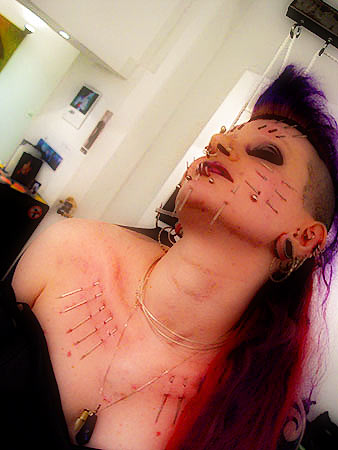 |
Inza’s combination suspension and play piercing rituals.
|
|
|
BME: |
What is your implant? Was there any specific reason why you wanted to get one?
|
| INZA: |
It’s a steel ring in my upper chest, made by IAM:Jussi. There wasn’t a specific reason for getting it, just that I had wanted an implant since the first time I heard about them. I thought I would love the sensation of having an object under my skin, and I was right: I enjoy the way it feels even more than the way it looks.
|
|
BME: |
Where does the design of your arm tattoo come from?
|
| INZA: |
The designs on my left arm are traditional Iban designs which opens me up for criticism for having traditional tattoos, but I don’t care. Even if I don’t know their exact meaning and I don’t belong to these cultures, I felt attracted to these designs on a primal, intuitive level, and that’s enough of a reason for me to get them.
My right arm tattoo design just came into my mind at some point, quite spontaneously. Because it’s a smile design, I had no problem explaining my idea to the tattoo artist, whose name is Yann, and who does some very original and stunning blackwork.
|
|
BME: |
To match your tattoo, you had Emilio Gonzales do scarification on your arm. Why did you have that done?
|
| INZA: |
The idea of that scarification came to me at about the same time as the tattoo design. I wanted a massive scar going parallel to the tattoo and emphasizing it, and I’m happy with the results. The healing process was very inconsistent, but because it covers quite a large area all around my arm, it doesn’t bother me at all. There is a kind of brutal beauty about it, which I really like.
I’m a person that needs to be progressing in things I do. The same goes for my body: I really enjoy changing, modifying and playing with it, and not doing it makes me feel like I’m stagnant. I’ve always had an urge for creativity, and body modification is one of the ways I can be creative with my Self. I can’t predict the future, but I really hope I will never loose this urge and will never stop transforming, or in a way, creating myself.
|
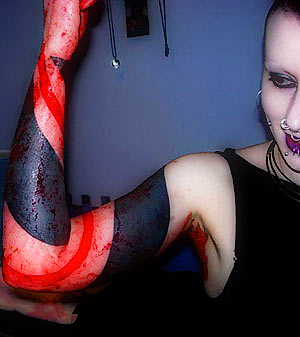 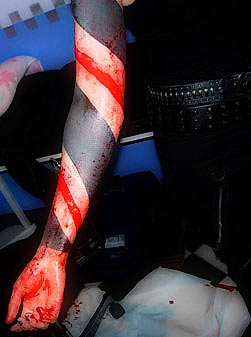
Inza’s arm tattoo and scarification project
|
|
|
BME: |
Do you have a lot of friends or peers that partake in these experiences, or is it a solo adventure?
|
| INZA: |
I’ve never met anyone who can really share my experiences, nor have I met anyone who has encouraged me to go further with them. Some people that I’ve had deep and close relationships with have nothing to do with body modification, but have given me enormous support on a personal level. They’ve been quite accepting of my body rituals because they know it’s important to me, and they can understand my reasons for doing what I do and what I get from doing it.
In the body modification scene, most of the people I meet don’t understand nor care about the ideas and motivation that are behind the things I do, and I’ve had some disappointing experiences when body modifications artists lose interest in helping me when they find out that I’m not going to do performances. I’m not a performer, and I find it really upsetting that so many people in the scene can’t imagine things like facial play piercing done not as performances.
|
|
BME: |
Have you influenced anyone or taught anyone about your methods of reaching altered states?
|
| INZA: |
I really don’t know if I have influenced anyone or not, as it’s not a goal of mine. The older I get, the more I turn inwards and the less I care about spreading my ideas and having impact on people. When I was a teenager, I was very concerned about propagating the things I believed in, but with age, I’ve learned that I should concentrate on my inner development and growth. There are too many people who want to change the world and these same people run around without working on and changing themselves first.
I perceive myself as a seeker and not a teacher because there are too many self-proclaimed “gurus” who don’t practice what they preach. I’m not even close the spiritual level I hope to be at someday for me to consider being a teacher to anybody, and honestly, it doesn’t really interest me. Plus, speaking specifically about body modification and body rituals, I think there are some things that are impossible to teach. For example, I often meet people who are very scared of pain, and it’s hard for them to understand that not everyone feels the same way as them. I don’t think they can be taught by anybody else but themselves not to have this fear. I think that the ability to explore, control and transcend intentional physical pain is something you naturally have or don’t have and it cannot be taught or discovered by somebody else — they have to learn about it themselves.
But I’m always willing to share, not teach, the things that I know in terms of body rituals and altered states if I see that people are really interested.
|
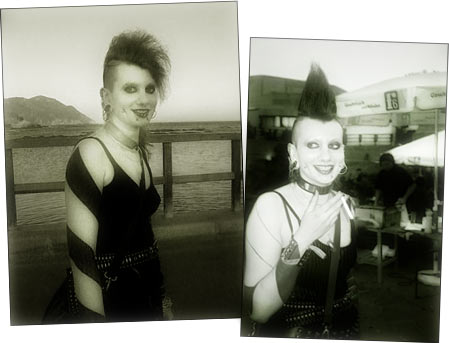 |
|


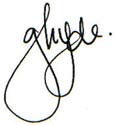













 BME/News and Modblog highlight only a small fraction of what BME has to offer. Take our free tour and subscribe to BME for access to over 3 million body modification related photos, videos, and stories.
BME/News and Modblog highlight only a small fraction of what BME has to offer. Take our free tour and subscribe to BME for access to over 3 million body modification related photos, videos, and stories.